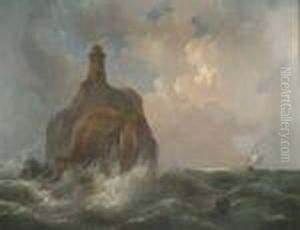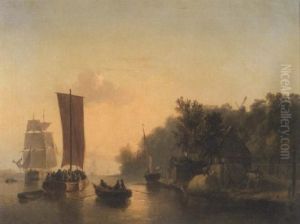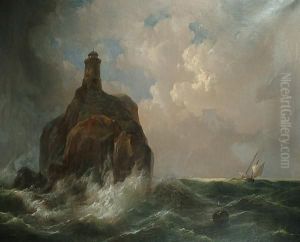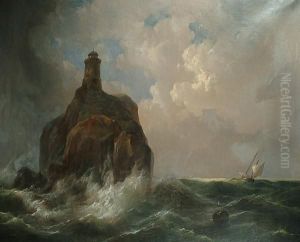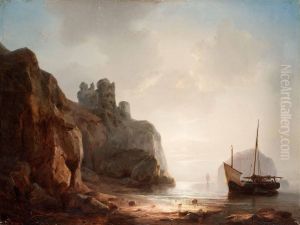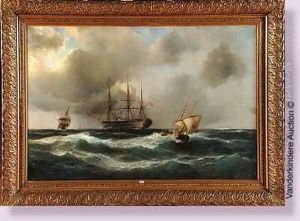Rudolf Hardorff Paintings
Rudolf Hardorff was a German landscape painter associated with the Düsseldorf school of painting. Born on February 15, 1828, in Hamburg, Germany, he grew up in an environment that fostered his artistic talents. He was initially trained by his father, who was also an artist, before he went on to study at the prestigious Düsseldorf Academy. This academy was a leading institution for art education in the 19th century, known for its rigorous training and emphasis on detailed historical painting.
During his time at the academy, Hardorff was influenced by the teachings of Johann Wilhelm Schirmer, a prominent landscape painter and professor who was known for his romantic approach to nature. Under Schirmer's guidance, Hardorff honed his skills in landscape painting, developing a style characterized by meticulous attention to detail and a romanticized depiction of nature. He was also likely influenced by other artists of the Düsseldorf school, such as Andreas Achenbach and Carl Friedrich Lessing, who were known for their dramatic and atmospheric landscapes.
Hardorff's works often depicted the German countryside, the Rhine River, and various pastoral scenes with a serene and idyllic quality. His paintings showcased a technical proficiency and an ability to capture the changing effects of light and atmosphere. Although he did not achieve the same level of fame as some of his contemporaries, his work was respected and he contributed to the popularity of the Düsseldorf school’s approach to landscape painting.
Throughout his career, Hardorff exhibited his works in various galleries and art exhibitions. His paintings were collected by art lovers and patrons, and they contributed to the broader landscape genre that was particularly popular during the 19th century.
Rudolf Hardorff passed away on April 14, 1884, in Düsseldorf, leaving behind a body of work that, while it may not have gained widespread recognition, remains a testament to the skill and aesthetic principles of the Düsseldorf school. His paintings continue to be of interest to collectors and historians who study the period and the regional style of painting that he represented.
